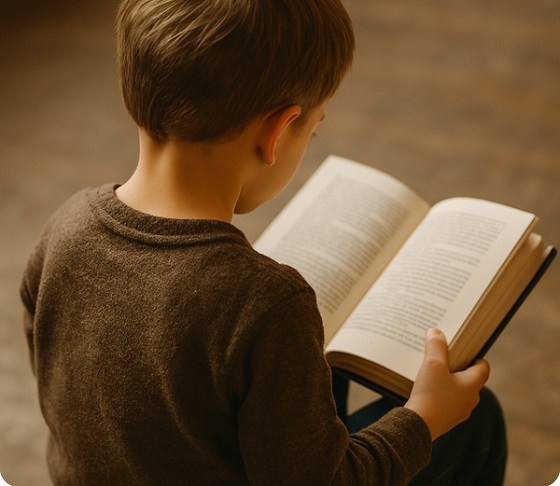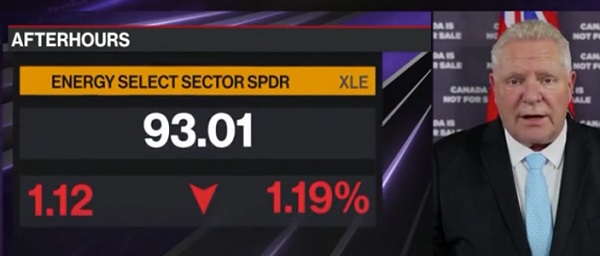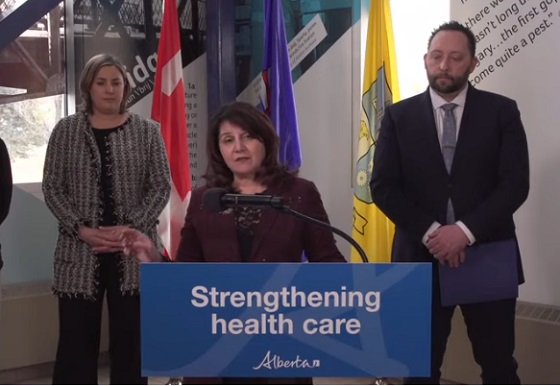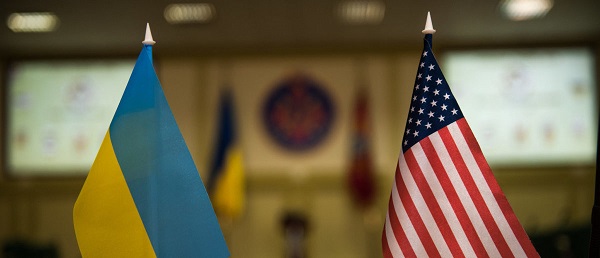Education
Toronto-area Catholic school hid ‘trans’ identity of 10-year-old girl from her parents

From LifeSiteNews
A school in the York Catholic District School Board kept ten-year-old Julie’s ‘transition’ a secret from her parents and called the Children’s Aid Society when her parents questioned what was happening with their daughter. The girl has since detransitioned.
A Toronto-area Catholic school has been exposed for hiding a young girl’s “gender transition” from her parents, and calling the Children’s Aid Society on the family when the parents expressed concern over the decision.
In a September 3 article, the National Post revealed that an unnamed school in the York Catholic District School Board (YCDSB), located in the suburbs of Toronto, kept a ten-year-old girl’s “transition” a secret from her parents and called the Children’s Aid Society (CAS) when her parents questioned what was happening. The National Post article uses the alias “Julie” for the girl for privacy reasons, it also uses aliases for the names of the parents.
“Transgender activists were actively posting videos about ‘safe’ breast binding and how euphoric testosterone makes you feel and how it makes all your problems suddenly disappear. The more I was brainwashed by these videos, the more I started to resonate with them,” Julie, who is now thirteen and no longer thinks she is “transgender,” told the outlet.
The article retells Julie’s experience, relaying that her gender dysphoria began in 2021 when she installed social media app TikTok and spent hours on it during COVID lockdowns. While online, Julie fell down rabbit holes and “discovered the LGBTQ+ community.”
In 2021, at the start of her grade five year, after watching a video asking viewers whether they were “anxious and uncomfortable” in their own bodies, Julie became convinced she was “non-binary.”
In 2022, she came out to her class and began using “they/them” pronouns and a male name with the help of a teacher from the YCDSB. This development was kept from her parents who only discovered it in June 2022 when Julie began cutting her hair short and revealed that she did not feel “like a girl anymore.”
“It was a horrible time for me as a parent because so much was happening behind my back. I didn’t know for a long while about many things that were happening. I suspected that something was really wrong,” Julie’s mother, Christina, recalled to the National Post.
Many Ontario school boards have policies requiring teachers and staff withhold students’ private information from their parents, including the York Region District School Board, Thames Valley District School Board, and the Hamilton-Wentworth District School Board.
By the beginning of grade six, in September 2022, Julie believed she was a boy, using a male name and looking into testosterone injections and a double mastectomy.
Julie also began wearing a chest binder, which led to a fight with her parents who worried about its long-term effects, especially as it had already caused bruising. Shortly after, Julie ran away from home and was later hospitalized with the intent to self-harm.
However, instead of addressing Julie’s underlying phycological issues, doctors assured her that chest binding was safe and even asked if she would like to learn about puberty blockers.
“At that age, I can’t make a conscious decision about medical interventions with an extremely high risk of life-threatening side effects that could make me unable to ever conceive a child,” Julie declared. “All accepted that I’m a boy and never tried to dig up any underlying problems that might be causing these suicidal ideations.”
After Julie ran away, the school called CAS, claiming that Christina’s opposition to Julie’s transition is a potential “culprit of conflict.” Over the next few months, the school called CAS several times, leading the agency to visit the family in their home at least five times.
The school principal told CAS that “she knows that the family loves their child and want the best for the child but they are doing a lot of damage emotionally at this time.”
Finally, in the early months of grade seven, now aged twelve, Julie’s father brought home Irreversible Damage by Abigail Shrier, which discussed the reasons behind gender dysphoria. While her father had bought the book for himself, Julie read it out of curiosity.
“After reading about detransitioners and how they came to identify as transgender, I understood I was heading in the wrong direction and needed to turn around before I hurt my loved ones or myself,” she revealed.
This began Julie’s detransition journey, which she discovered was not as celebrated as her initial decision to identify as a boy.
“When we announced that she wants to go back to female pronouns, everyone kept asking: ‘Are you sure? Are you sure you want to transition?’” Christina said.
Similarly, Julie revealed, “I did not really lose any friends, but my closest friends seem to be, pushing away from me. Like, they’re not talking to me as much, and they’re part of the LGBTQ” community.”
Now, as she enters grade eight, Julie revealed that she “finally felt truly at peace with my identity.”
Unfortunately, Julie’s story is not unique.
As LifeSiteNews previously reported, many Ontario parents revealed that public schools did not ask for parental consent before “gender transitioning” their children, resulting in child-parent relationships being destroyed.
Despite the claims of LGBT activists, a significant body of evidence shows that “affirming” gender confusion carries serious harms, especially when done with impressionable children who lack the mental development, emotional maturity, and life experience to consider the long-term ramifications of the decisions being pushed on them, or full knowledge about the long-term effects of life-altering, physically transformative, and often irreversible surgical and chemical procedures.
Studies find that more than 80 percent of children suffering gender dysphoria outgrow it on their own by late adolescence and that “transition” procedures, including “reassignment” surgery, fail to resolve gender-confused individuals’ heightened tendency to engage in self-harm and suicide – and even exacerbate it, including by reinforcing their confusion and neglecting the actual root causes of their mental strife.
Education
Our Kids Are Struggling To Read. Phonics Is The Easy Fix

From the Frontier Centre for Public Policy
One Manitoba school division is proving phonics works
If students don’t learn how to read in school, not much else that happens there is going to matter.
This might be a harsh way of putting it, but it’s the truth. Being unable to read makes it nearly impossible to function in society. Reading is foundational to everything, even mathematics.
That’s why Canadians across the country should be paying attention to what’s happening in Manitoba’s Evergreen School Division. Located in the Interlake region, including communities like Gimli, Arborg and Winnipeg Beach, Evergreen has completely overhauled its approach to reading instruction—and the early results are promising.
Instead of continuing with costly and ineffective methods like Reading Recovery and balanced literacy, Evergreen has adopted a structured literacy approach, putting phonics back at the centre of reading instruction.
Direct and explicit phonics instruction teaches students how to sound out the letters in words. Rather than guessing words from pictures or context, children are taught to decode the language itself. It’s simple, evidence-based, and long overdue.
In just one year, Evergreen schools saw measurable gains. A research firm evaluating the program found that five per cent more kindergarten to Grade 6 students were reading at grade level than the previous year. For a single year of change, that’s a significant improvement.
This should not be surprising. The science behind phonics instruction has been clear for decades. In the 1960s, Dr. Jeanne Chall, director of the Harvard Reading Laboratory, conducted extensive research into reading methods and concluded that systematic phonics instruction produces the strongest results.
Today, this evidence-based method is often referred to as the “science of reading” because the evidence overwhelmingly supports its effectiveness. While debates continue in many areas of education, this one is largely settled. Students need to be explicitly taught how to read using phonics—and the earlier, the better.
Yet Evergreen stands nearly alone. Manitoba’s Department of Education does not mandate phonics in its public schools. In fact, it largely avoids taking a stance on the issue at all. This silence is a disservice to students—and it’s a missed opportunity for genuine reform.
At the recent Manitoba School Boards Association convention, Evergreen trustees succeeded in passing an emergency motion calling on the association to lobby education faculties to ensure that new teachers are trained in systematic phonics instruction. It’s a critical first step—and one that should be replicated in every province.
It’s a travesty that the most effective reading method isn’t even taught in many teacher education programs. If new teachers aren’t trained in phonics, they’ll struggle to teach their students how to read—and the cycle of failure will continue.
Imagine what could happen if every province implemented structured literacy from the start of Grade 1. Students would become strong readers earlier, be better equipped for all other subjects, and experience greater success throughout school. Early literacy is a foundation for lifelong learning.
Evergreen School Division deserves credit for following the evidence and prioritizing real results over educational trends. But it shouldn’t be alone in this.
If provinces across Canada want to raise literacy rates and give every child a fair shot at academic success, they need to follow Evergreen’s lead—and they need to do it now.
All students deserve to learn how to read.
Michael Zwaagstra is a public high school teacher and a senior fellow at the Frontier Centre for Public Policy.
Alberta
Province pumping $100 million into Collegiates and Dual-Credit hands-on learning programs

Alberta’s government is helping students discover their skills and interests today, to help them find careers for tomorrow.
If passed, Budget 2025 will provide more than $100 million over three years for school boards to grow career education programs, including funding for more collegiate and dual-credit programs across Alberta.
“We are working to set students up for success by strengthening job-focused education. This money is helping schools partner with businesses, universities and colleges to create programs that will help students hit the ground running after they graduate.”
Career education helps students gain credits towards graduation while earning hands-on experience in fields like the trades, computer programming, health care, agriculture, culinary arts and more. These career education programs support a strong economy by helping students learn the skills they need to get in-demand jobs.
Collegiate schools
Collegiate schools work with businesses, universities and colleges to offer classes that give students pathways to education and careers in the job of their choice. There are 12 collegiate schools in Alberta, offering many different types of programming for grades 7-12, including aviation, graphic design, trades and more.
If passed, Budget 2025 provides more than $21 million to school boards to help fund special classrooms like carpentry workshops, film and media rooms, science laboratories, heavy equipment simulators and aircraft hangars. Another $6 million is being invested to support the start-up costs for new collegiate schools.
Dual-credit programs
Budget 2025, if passed, also provides $4.6 million in 2025/26 to start new or improve existing dual-credit programs. In partnership with universities and colleges, dual-credit programs give students a head start on rewarding careers by allowing them to earn high-school and post-secondary credits at the same time. Of the $4.6 million, $550,000 is being provided by Alberta Seniors, Community and Social Services for new and improved dual-credit health care aide programs.
“Health care aides play a critical role in ensuring Albertans receive the continuing care services they need to maintain their health, independence and quality of life. Our investments into career pathways for health care aides will provide opportunities for young Albertans to develop the skills they need to build a rewarding career in Alberta’s continuing care workforce.”
Another $1.4 million is being invested to support students participating in off-campus career education programs through CAREERS. This non-profit connects students to jobs in high-demand fields, such as the trades, technology, health, forestry and agriculture.
“Investments in collegiate and dual-credit programming are significant for Calgary Catholic as they further strengthen our collegiate and dual-credit programming. This programming will open opportunities for our students and help them to realize their full potential.”
“Before Fusion Collegiate, I felt lost and wasn’t really sure what to do after high school. Thanks to its career-focused learning and the opportunities through Fusion and The Educational Partnership Foundation, I’m now working as a first-year apprentice plumber with Mr. Rooter. The hands-on trades training, high school credits, safety certifications, and real-world skills I picked up completely changed my life. I’m excited about where my career is headed and really thankful for the support that helped me get here.”
Budget 2025 is meeting the challenge faced by Alberta communities with continued investments in education and health, lower taxes for families and a focus on the economy.
Quick facts
- If passed, Budget 2025 invests $102.4 million over three years to provide sustainable, predictable career education funding, and to increase access to career education for Alberta students.
- This includes $8.4 million over 2026-27 and 2027-28 to raise awareness among students and families of career education programs and pathways available to Alberta students.
- Career education in Alberta includes career and technology courses, Career and Life Management (CALM), dual-credit courses, collegiate schools, apprenticeships and off-campus education programming.
- Since 2013, more than 95,000 high school students participated in at least one dual–credit course.
- In spring 2025, Alberta Education will engage with education partners on best practices to bring more career education opportunities to students.
- Since 2022, education partners and almost 5,000 Albertans have provided their feedback on career education and workforce needs.
Related information
-

 2025 Federal Election2 days ago
2025 Federal Election2 days agoLiberal MP resigns after promoting Chinese government bounty on Conservative rival
-

 2025 Federal Election2 days ago
2025 Federal Election2 days ago‘I’m Cautiously Optimistic’: Doug Ford Strongly Recommends Canada ‘Not To Retaliate’ Against Trump’s Tariffs
-

 Business2 days ago
Business2 days agoCanada may escape the worst as Trump declares America’s economic independence with Liberation Day tariffs
-

 Courageous Discourse1 day ago
Courageous Discourse1 day agoEurope Had 127,350 Cases of Measles in 2024
-

 2025 Federal Election1 day ago
2025 Federal Election1 day agoHighly touted policies the Liberal government didn’t actually implement
-

 Business2 days ago
Business2 days agoTrump says wave of reciprocal tariffs will go into effect at midnight
-

 Alberta2 days ago
Alberta2 days agoBig win for Alberta and Canada: Statement from Premier Smith
-

 Catherine Herridge2 days ago
Catherine Herridge2 days agoFBI imposed Hunter Biden laptop ‘gag order’ after employee accidentally confirmed authenticity: report








